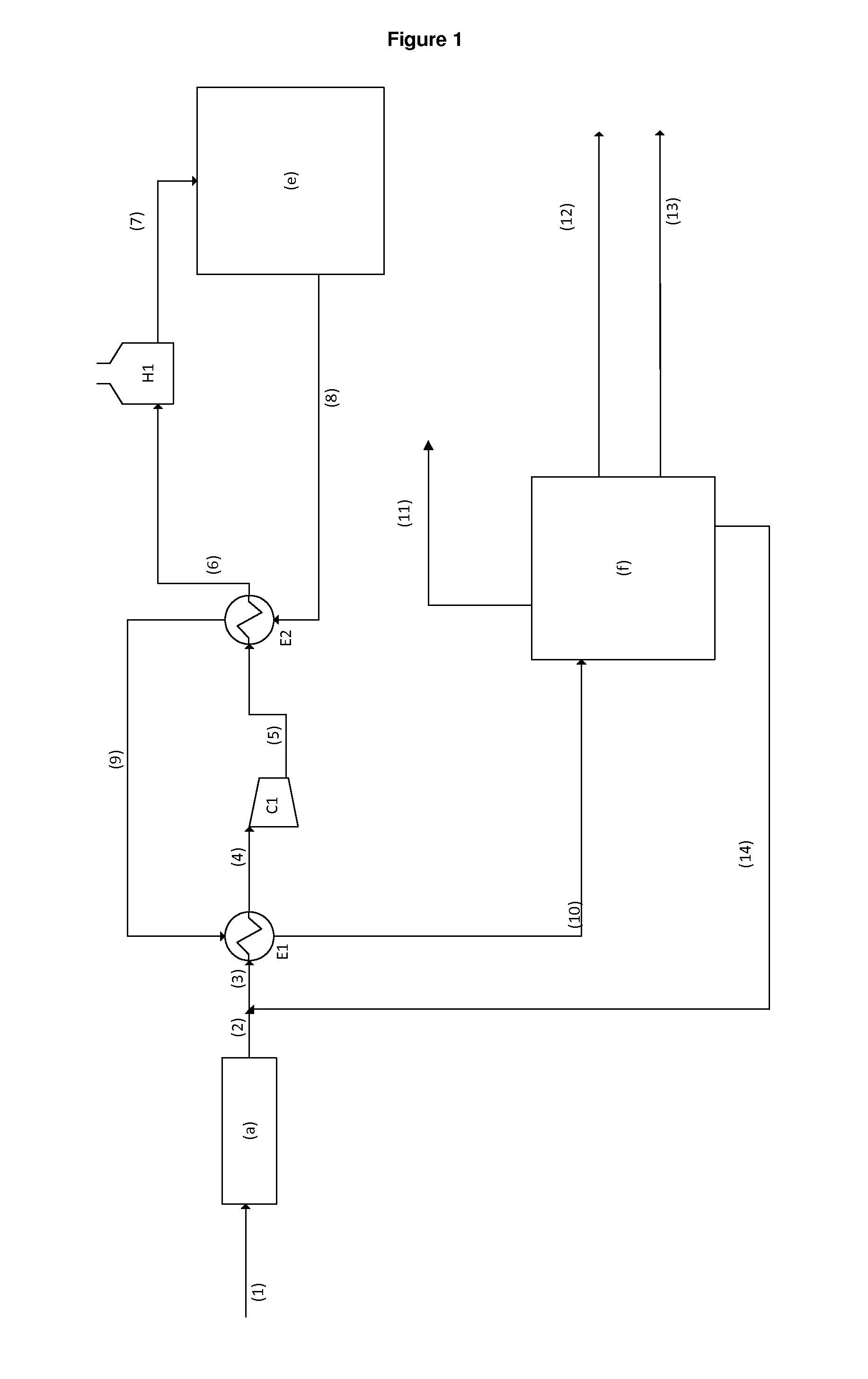Process for dehydration of ethanol into ethylene using pretreatment of the feedstock
- Summary
- Abstract
- Description
- Claims
- Application Information
AI Technical Summary
Benefits of technology
Problems solved by technology
Method used
Image
Examples
example 1
In Accordance with the Invention
[0099]Example 1 illustrates a process according to the invention.
[0100]The ethanol feedstock under consideration is produced by fermentation of wheat, without extracting glutens, by a dry-milling-type process according to the English term.
Stage a)
[0101]The ethanol feedstock is introduced, at a flow rate of 45,664 kg / h, at a temperature of 120° C. and a pressure of 1.15 MPa into a pretreatment resin TA801 so as to eliminate traces of nitrogen-containing compounds. During this pretreatment, a portion of the ethanol is converted into DEE. The characteristics of the crude and pretreated ethanol feedstock are provided in Table 1.
TABLE 1Characteristics of the Ethanol Feedstock Beforeand After Pretreatment (Percent by Mass)ETHANOLETHANOL AFTERFEEDSTOCKPRETREATMENTETHANOL91.2%82.1%H20 8.7%10.5%DEE 0% 7.3%NITROGEN-CONTAINING0.005% 0.000% COMPOUNDS
Stage b)
[0102]The evaporation feedstock, constituted by the pretreated ethanol feedstock in a mixture with 141,252...
example 2
Comparison
[0125]Example 2 illustrates a process in which the pretreatment stage has not taken place. The ethanol is not converted into DEE, and the process begins in stage b).
Stage b)
[0126]The evaporation feedstock, constituted by the non-pretreated ethanol feedstock in a mixture with 141,258 kg / h of treated water and unconverted ethanol that are recycled according to stage e), is introduced, at a flow rate of 186,922 kg / h, into the exchanger E1 at a pressure that is equal to 0.24 MPa and at a temperature of 120° C.
[0127]Relative to Example 1, the pressure was lowered by 0.03 MPa. Without the presence of DEE, the bubble temperature of the evaporation feedstock at 0.27 MPa is 115° C. (127° C. in Example 1). The inlet pressure is modified by 0.03 MPa in such a way as to preserve a minimum thermal approach of 15° C. with the effluent that is obtained from the last adiabatic reactor of stage d).
[0128]In stage c), the majority of the latent heat of the aqueous phase of the effluent that ...
PUM
| Property | Measurement | Unit |
|---|---|---|
| Temperature | aaaaa | aaaaa |
| Temperature | aaaaa | aaaaa |
| Temperature | aaaaa | aaaaa |
Abstract
Description
Claims
Application Information
 Login to View More
Login to View More - R&D Engineer
- R&D Manager
- IP Professional
- Industry Leading Data Capabilities
- Powerful AI technology
- Patent DNA Extraction
Browse by: Latest US Patents, China's latest patents, Technical Efficacy Thesaurus, Application Domain, Technology Topic, Popular Technical Reports.
© 2024 PatSnap. All rights reserved.Legal|Privacy policy|Modern Slavery Act Transparency Statement|Sitemap|About US| Contact US: help@patsnap.com








